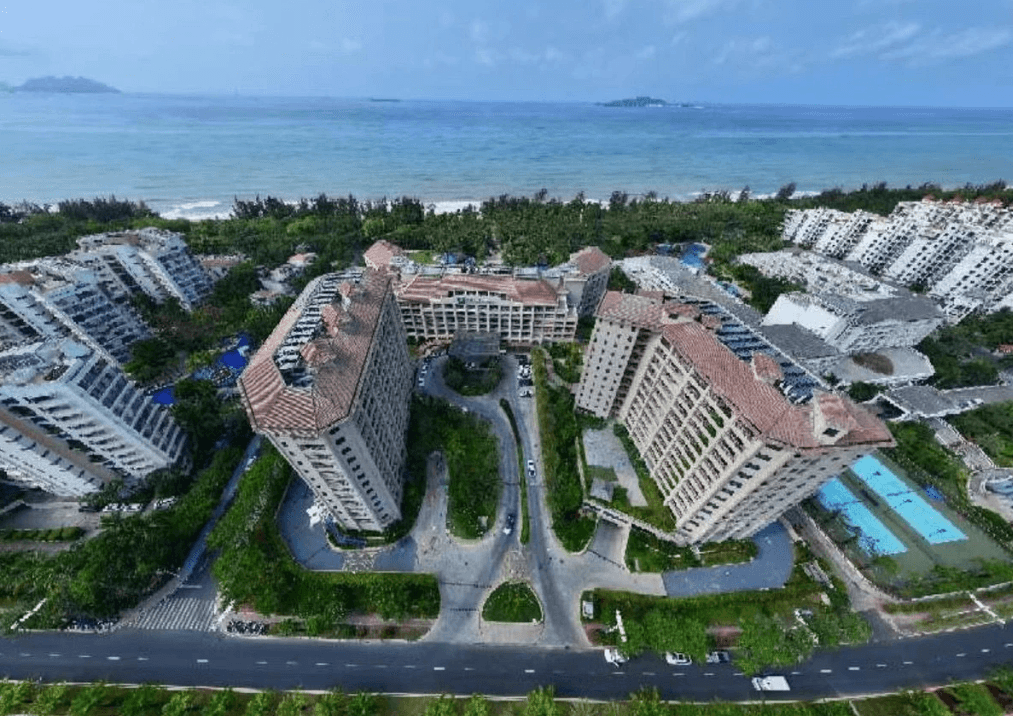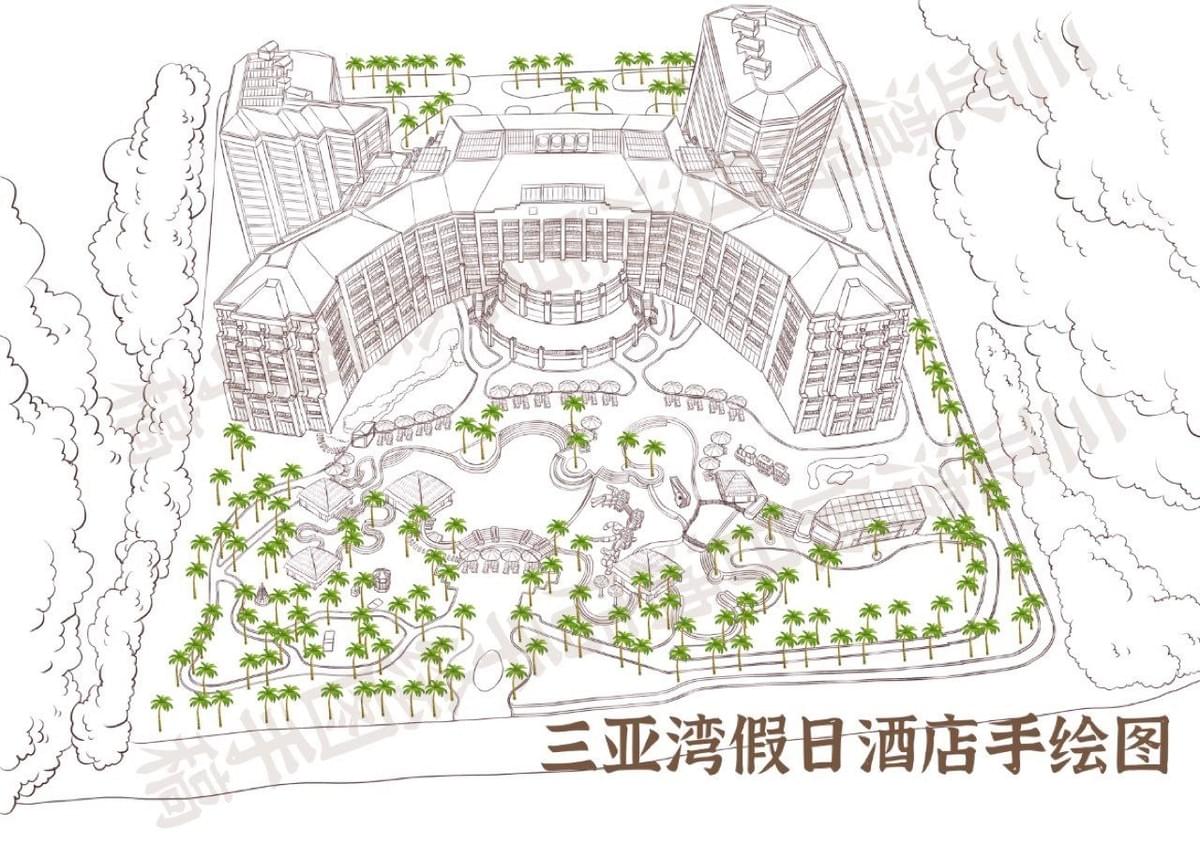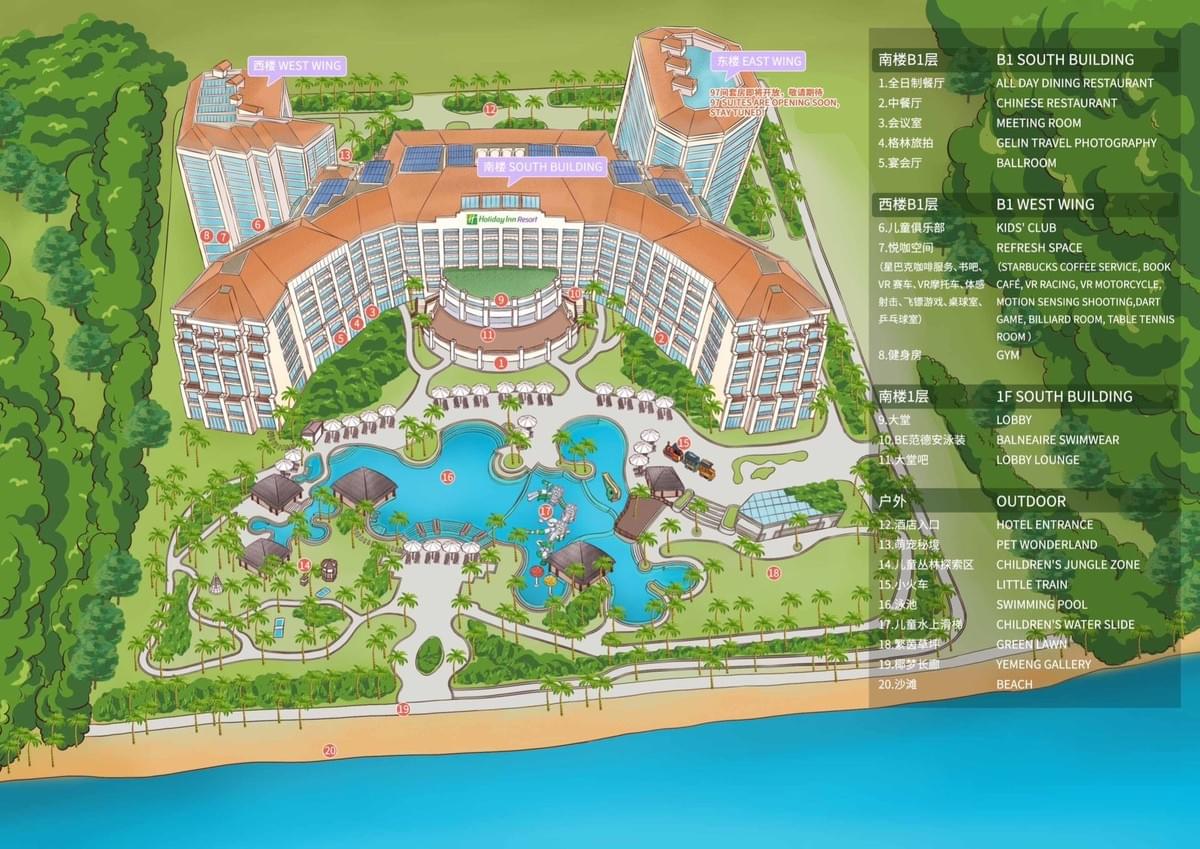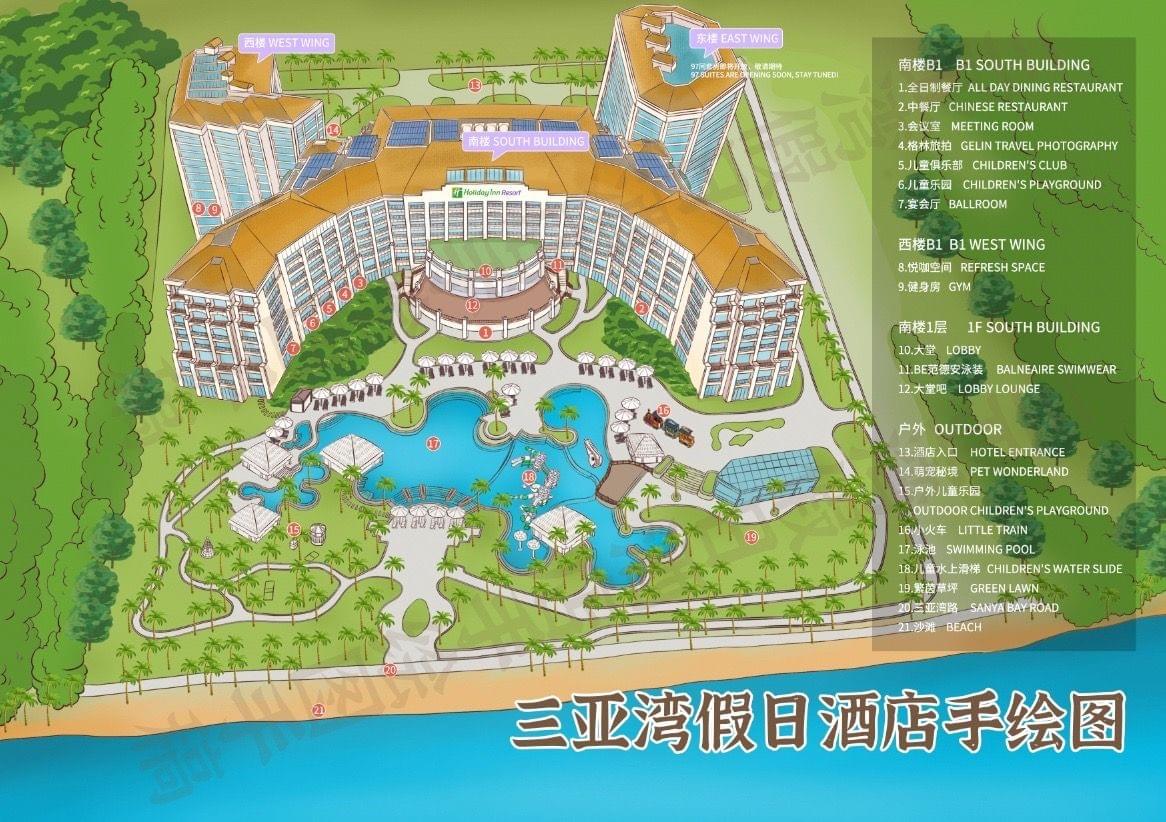Introduction
In the world of hospitality design, few elements blend functionality and artistry as seamlessly as a well-crafted property map. These illustrated guides serve as both wayfinding tools and visual storytellers, offering guests their first glimpse into the experience that awaits them. The hand-drawn map of Sanya Bay Holiday Hotel (三亚湾假日酒店) stands as a prime example of this delicate balance between utility and aesthetic appeal. In this post, we'll explore the intricate process behind creating such a specialized cartographic work and analyze what makes it so effective.
The Meticulous Creation Process
Consultation and Requirements Gathering
Every exceptional hotel map begins with thorough groundwork. Professional mapping teams typically:
- Conduct detailed consultations with hotel management to understand their specific needs
- Identify all key facilities that require highlighting
- Clarify the map's primary purpose—whether for guest orientation, marketing materials, or digital platforms
- Establish the hotel's brand identity elements that should be incorporated
Comprehensive Data Collection
Creating an accurate representation requires:
- Obtaining architectural blueprints and aerial photography
- Conducting on-site visits to understand spatial relationships and flow
- Documenting distinctive features like swimming pools, gardens, and recreational areas
- Noting directional challenges guests might encounter
Thoughtful Design Conceptualization
The artistic vision takes shape through:
- Developing a bird's-eye perspective that intuitively communicates the property's layout
- Creating a color palette reflecting the tropical resort atmosphere of Sanya Bay
- Finding the perfect balance between detailed illustration and readable simplicity
- Determining the appropriate scale to showcase both grand structures and intimate spaces
Execution and Refinement
The final stages involve:
- Digital illustration techniques that preserve a warm, hand-drawn aesthetic
- Strategic color application emphasizing different zones (buildings, water features, landscapes)
- Integration of clear numerical markers with bilingual Chinese/English labels
- Multiple revision cycles to ensure accuracy and visual appeal
What Makes This Map Exceptional
Strategic Visual Hierarchy
The Sanya Bay Holiday Hotel map masterfully employs:
- Distinctive color-coding for different buildings (East Wing, West Wing, South Building)
- Proportional representation of structures while emphasizing key amenities
- Careful placement of text to avoid visual clutter
- Elegant typography that remains legible at various sizes
Guest-Centric Design Philosophy
Every element serves the visitor experience through:
- Prominent featuring of high-traffic areas like pools, restaurants, and lobbies
- Clear pathways showing how to navigate between facilities
- Thoughtful inclusion of recreational spaces like playgrounds and gardens
- Visual cues highlighting beachfront access points
Functional Bilingual Implementation
The map bridges cultural and language barriers with:
- Comprehensive legend detailing 21 numbered facilities in both Chinese and English
- Consistent labeling conventions throughout
- Intuitive symbols that transcend language requirements
- Clear geographic orientation showing the hotel's relationship to Sanya Bay
The Enduring Value of Illustrated Hotel Maps
In an age of digital navigation, the illustrated hotel map remains irreplaceable. The Sanya Bay Holiday Hotel map demonstrates why these artistic creations continue to enhance the guest experience:
- They provide immediate spatial understanding without technological barriers
- They serve as charming keepsakes that guests often retain as souvenirs
- They communicate the property's character and attention to detail
- They reduce guest anxiety by creating familiarity before physical exploration
Conclusion
The hand-drawn map of Sanya Bay Holiday Hotel exemplifies the perfect marriage of artistic expression and practical functionality. By balancing meticulous detail with intuitive design, it accomplishes the dual purpose of guiding guests while showcasing the property's appeal. In the hospitality industry, where first impressions and guest experience reign supreme, such thoughtfully crafted cartographic works prove that sometimes the most traditional mediums remain the most effective. For hotels seeking to enhance their guest experience, investing in quality illustrated mapping is not merely about wayfinding—it's about storytelling, brand identity, and creating lasting impressions that begin before the guest even sets foot on the property.




